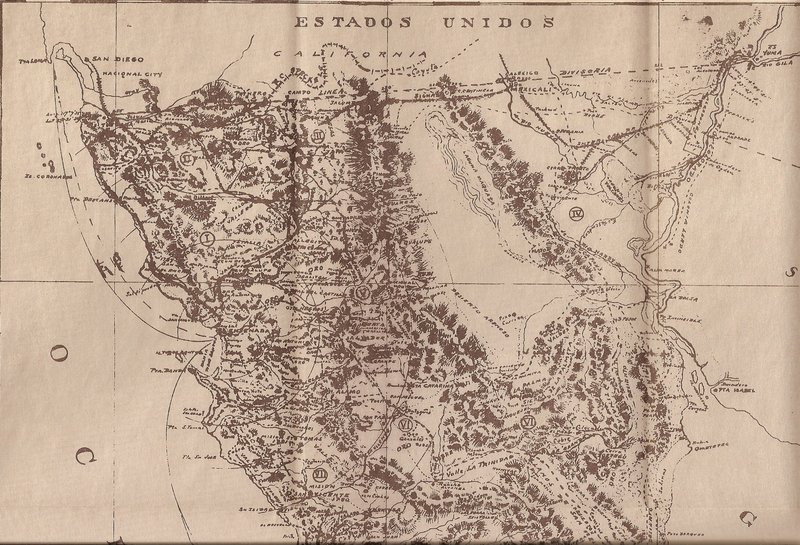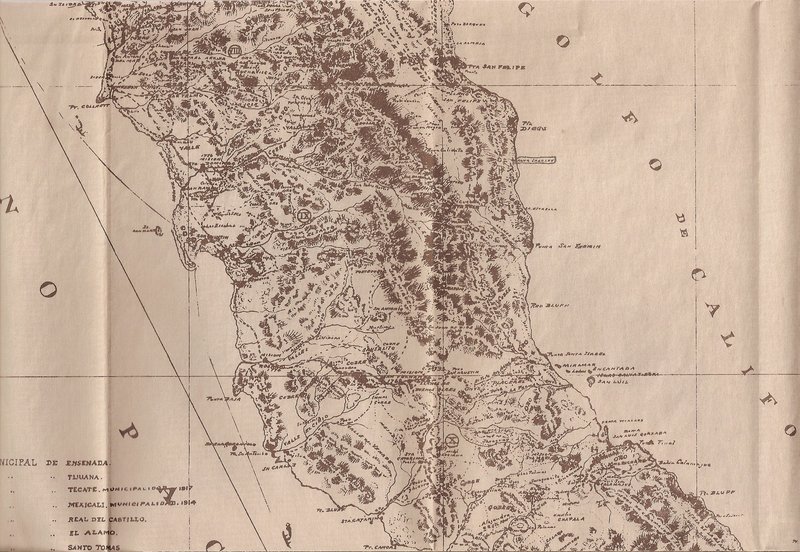| Pages:
1
2 |
David K
Honored Nomad
        
Posts: 65383
Registered: 8-30-2002
Location: San Diego County
Member Is Offline
Mood: Have Baja Fever
|
|
Quote: Originally posted by bajaric  |
I have a question for DK / Max or anyone else who might know regarding the Mission bells. Gabb noted some abandoned prospecting for minerals around
Mission San Fernando, and another source said that copper was mined there by the Missionaries, and used for cooking implements and even some of the
bells for the later missions. Ever heard of that?
|
From Max Kurillo... the bell expert!
A little bit of background,
The people in Peru had the art of metal casting quite perfected since about the year 600, they even brought the skills to the Guaymas area and all the
way up to headwaters of the Gulf, all of this happened about the year 900. The metal casting was confined to small objects, mainly bells no larger
than 3”. This technology remained in Senora region. There is no record of it being transferred to Indians of Nevada or California.
Now! New Mexico is different, they had roving metal casters that went from city to towns, (ca 1700-1800) casting large bells, 12” to about 20”,
some are displayed at the Museum of New Mexico in Santa Fe. Others are stored at Hearst Castle in CA.
I do not find any solid proof that metal casting of bells was done in Baja California during the Spanish mission period (1697- 1825+/-), for so many
reasons.
I would safely say, if anyone took the time to look at all the bells that are now in the missions of Baja none would be inscribed “Hecho en Baja
California” or be blank. All the old bells, in the missions of Baja and Alta California, were brought from Mexico or other countries. Peru was
the most popular location to order bells from.
People that think bells were cast in early California do not know of the complex steps in casting bell, of any size. Bell casting is one of my most
complete and best subjects, I have written published articles about bell casting.
|
|
|
bajaric
Senior Nomad
  
Posts: 667
Registered: 2-2-2015
Member Is Offline
|
|
Thanks for asking Max Kurrillo about that, DK. I met you and Max at the book signing in Pt Loma, I tend to agree with Max, regarding the bells. It
is not too likely that any bells were cast in Baja by the Missionaries. Nonetheless, in the book Modest Fortunes a newspaper article (Los Angeles
Evening Express, 1895) was quoted the said the following:
"At San Fernando Mission …. it is said that nearly all the mission bells in this district as well as in California were wrought in a primitive way
by its priestly coppersmiths. On of the bells at the Rosario Mission is marked "El Rosario" and dated 1810, was founded at San Fernando, and all the
bells at the Santo Domingo Mission were from the same place"
Highly unlikely that bells in Alta California were made at San Fernando, or any bells, for that matter, though copper was mined there. For one, the
Padres would have needed not only copper, but tin, to make the alloy of bronze. Also, all of the scholarly sources are in agreement that the Padres
main concern was with feeding the converts, and mining as an economic activity was not a priority. Aschmann went so far as to say that the
missionaries actively discouraged mining, as there was not enough food for both miners and Indians. It is significant to note that the lucrative
business of silver mining and pearl fishing in Baja Sur was carried out not by the missionaries, but by private individuals, lending credence to the
idea that mining for economic gain was not on the missionary's agenda.
That not to say that the missionaries did no mining at all. They mined lime (Sea shells) and roasted it in kilns to make mortar, they dug clay for
adobe, quarried stone, and did a limited amount of salt mining on one of the islands, and they may have even mined a little copper, but it was all in
the interest of supporting the missions, not accumulating wealth. This is the prevailing opinion of anyone who has studied the subject. Of course,
everyone loves a good lost treasure story.
Also while it is almost certain that the Jesuits did not economic mining in the later period of the Dominicans there was more of a chance that some
mining took place, and even copper-smelting.
I might add, that the gold and silver in Northern / Central Baja was not easy to find back then. It is not easy to find today! Aschmann, a trained
geologist, passed very near several large placer deposits and failed to notice them. It was not like the mother lode in Northern California where
every stream was loaded with gold; the gold of Baja was buried deep in dry arroyos in some of the driest, most inhospitable country on earth. Even if
the Padres had wanted to do a little mining on the side it would not have been an easy task to even find it.
[Edited on 4-30-2020 by bajaric]
|
|
|
David K
Honored Nomad
        
Posts: 65383
Registered: 8-30-2002
Location: San Diego County
Member Is Offline
Mood: Have Baja Fever
|
|
My pleasure, Ric.
I have pages 62-63 open of Modest Fortunes. I love the photo of the bells but wish they gave a location and date for the photo! Where are those bells
now? The story of a foundry there is pretty far fetched, at least for making bells.
El Rosario had two mission bells in the early 1960s, then just one. It was said that the townspeople sold one for some needed income.
I don't think I read anything about bells from Mission Santo Domingo? It was one of the last missions to remain roofed with an altar inside.
Generally a town elder would keep mission artifacts, like bells or altar pieces, hidden for protection. At some point either a priest or government
official would show up and insist those items be entrusted with them.
The mission books were collected in this manner by California church officials and protected... until the San Francisco Earthquake and Fire consumed
them! Fortunately, the data was saved by others and appear in history books.
|
|
|
4x4abc
Ultra Nomad
    
Posts: 4452
Registered: 4-24-2009
Location: La Paz, BCS
Member Is Offline
Mood: happy - always
|
|
do we have a download link yet for the 1918 Goldbaum map?
Harald Pietschmann
|
|
|
David K
Honored Nomad
        
Posts: 65383
Registered: 8-30-2002
Location: San Diego County
Member Is Offline
Mood: Have Baja Fever
|
|
It is on my website, Harald. 1925 printing of the 1918 map.
|
|
|
4x4abc
Ultra Nomad
    
Posts: 4452
Registered: 4-24-2009
Location: La Paz, BCS
Member Is Offline
Mood: happy - always
|
|
looking for the original 1918
Harald Pietschmann
|
|
|
David K
Honored Nomad
        
Posts: 65383
Registered: 8-30-2002
Location: San Diego County
Member Is Offline
Mood: Have Baja Fever
|
|
It is in brownstone and not as easy to read. I have scanned parts of it over the years. It is in the book, Towns of Baja California.
I will post part of it so you can see how it compares to the 1925 printing of it.
|
|
|
4x4abc
Ultra Nomad
    
Posts: 4452
Registered: 4-24-2009
Location: La Paz, BCS
Member Is Offline
Mood: happy - always
|
|
easily fixed with light settings and contrast

Harald Pietschmann
|
|
|
David K
Honored Nomad
        
Posts: 65383
Registered: 8-30-2002
Location: San Diego County
Member Is Offline
Mood: Have Baja Fever
|
|



|
|
|
4x4abc
Ultra Nomad
    
Posts: 4452
Registered: 4-24-2009
Location: La Paz, BCS
Member Is Offline
Mood: happy - always
|
|
can you please email those images - the resolution here is bad for my eyes
Harald Pietschmann
|
|
|
David K
Honored Nomad
        
Posts: 65383
Registered: 8-30-2002
Location: San Diego County
Member Is Offline
Mood: Have Baja Fever
|
|
You bet!
|
|
|
| Pages:
1
2 |
|

